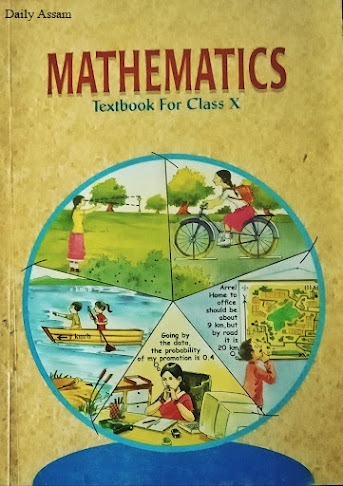
CONTENTS
Foreword
Preface
1. Real Numbers
1.1 Introduction
1.2 Euclid’s Division Lemma
1.3 The Fundamental Theorem of Arithmetic
1.4 Revisiting Irrational Numbers
1.5 Revisiting Rational Numbers and Their Decimal Expansions
1.6 Summary
2. Polynomials
2.1 Introduction
2.2 Geometrical Meaning of the Zeroes of a Polynomial
2.3 Relationship Meaning of the Zeroes and Coefficients of a Polynomial
2.4 Division Algorithm for Polynomials
2.5 Summary
3. Pair of Linear Equations in Two Variables
3.1 Introduction
3.2 Pair of Linear Equations in Two Variables
3.3 Graphical Method of Solution of a Pair of Linear Equations
3.4 Algebraic Methods of Solving a Pair of Linear Equations
3.4.1 Substitution Method
3.4.2 Elimination Method
3.4.3 Cross-Multiplication Method
3.5 Equations Reducible to a Pair Linear Equations in Two Variables
3.6 Summary
4. Quadratic Equations
4.1 Introduction
4.2 Quadratic Equations
4.3 Solution of a Quadratic, Equation by Factorisation
4.4 Solution of a Quadratic Equation by Completing the Square
4.5 Nature of Roots
4.6 Summary
5. Arithmetic Progressions
5. 5.1 Introduction
5.2 Arithmetic Progressions
5.3 nth Term of an AP
5.4 Sum of First n Terms of an AP
5.5 Summary
6. Triangles
6.1 Introduction
6.2 Similar Figures
6.3 Similarity of Triangles
6.4 Criteria for Similarity of Triangles
6.5 Areas of Similar Triangles
6.6 Pythagoras Theorem
6.7 Summary
7. Coordinate Geometry
7.1 Introduction
7.2 Distance Formula
7.3 Section Formula
7.4 Area of a Triangle
7.5 Summary
8. Introduction to Trigonometry
8.1 Introduction
8.2 Trigonometric Ratios
8.3 Trigonometric Ratios of Some Specific Angles
8.4 Trigonometric Ratios of Complementary Angles
8.5 Trigonometric Identities 8.6 Summary
9. Some Applications of Trigonometry
9.1 Introduction
9.2 Heights and Distances
9.3 Summary
10. Circles
10.1 Introduction
10.2 Tangent to a Circle
10.3 Number of Tangents from a Point on a Circle
10.4 Summary
11. Constructions
11.1 Introduction
11.2 Division of a Line Segment
11.3 Construction of Tangents to a Circle
11.4 Summary
12. Areas Related to Circles
12.1 Introduction
12.2 Perimeter and Area of a Circle – A Review
12.3 Areas of Sector and Segment of a Circle
12.4 Areas of Combinations of Plane Figures
12.5 Summary
13. Surface Areas and Volumes
13.1 Introduction
13.2 Surface Area of a Combination of Solids
13.3 Volume of a Combination of Solids
13.4 Conversion of Solid from One Shape to Another
13.5 Frustum of a Cone 13.6 Summary
14. Statistics
14.1 Introduction
14.2 Mean of Grouped Data
14.3 Mode of Grouped Data
14.4 Median of Grouped Data
14.5 Graphical Representation of Cumulative Frequency Distribution
14.6 Summary
15. Probability
15.1 Introduction
15.2 Probability – A Theoretical Approach
15.3 Summary
Appendix A1: Proofs in Mathematics
Al.1 Introduction
A1.2 Mathematical Statements Revisited
A1.3 Deductive Reasoning
A1.4 Conjectures, Theorems, Proofs and Mathematical Reasoning
A1.5 Negation of a Statement
A1.6 Converse of a Statement
A1.7 Proof by Contradiction
A1.8 Summary
Appendix A2: Mathematical Modelling
A2.1 Introduction
A2.2 Stages in Mathematical Modelling
A2.3 Some Illustrations
A2.4 Why is Mathematical Modelling Important?
A2.5 Summary